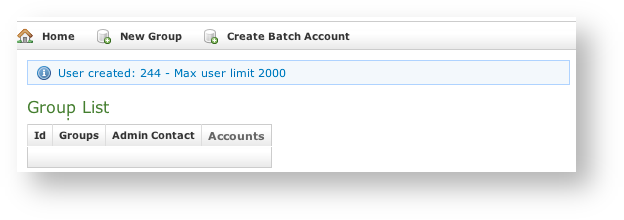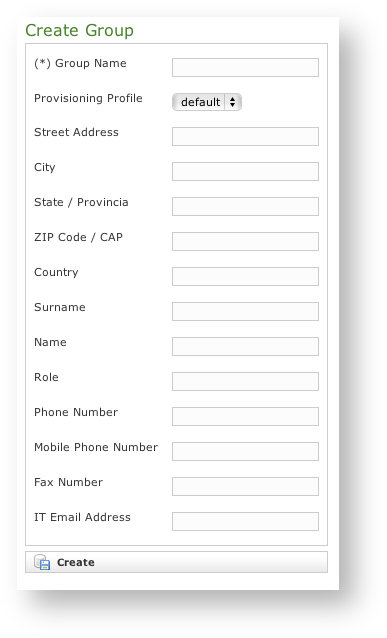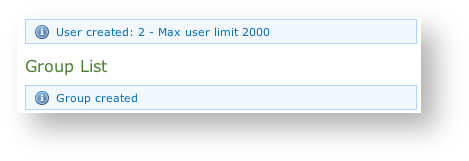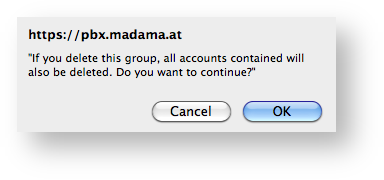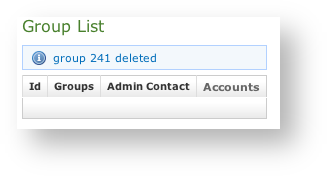1.0.1 What is this about?
In order to perform the service you need to configure some SIP accounts, meaning who is going to place and receive secure calls. In PrivateServer you can't create Accounts outside a Group. As there's no default group your first goal is to manage Groups.
1.0.2 Groups Management
A Group is just a container of users' accounts. It is useful to organize your users in a sort of address book, dividing them amongst departments or buildings for example.
There is no other use of the Groups. Each Account on your PrivateServer can call or receive calls from another one, even if they belong to different Groups.
1.0.2.1 Create
On your left you can find the main menu, which first line reads "Groups & Accounts".
You have to click on it to gain access to the group management page (figure 1. Groups & Accounts).
Your first action will be to create a new group. Thus click on the "New group" icon on the top of the page.
You'll be redirected on the group creation form (figure 2. Group creation Form).
The only mandatory field is "Group Name", so please pick a meaningfull name and choose whether to fill all fields. We suggest you to fill almost the IT Email Address field which we'll show up in the Groups & Accounts page after the creation procedure is completed. Please also pay attention to the Provisioning Profile you assign to the group.
After you're done, complete the creation procedure clicking on the "Create" icon on the bottom of the page. Then you'll get back on the group management page, but this time you'll have the group just created listed as in figure 3. The group has been created successfully. The Group name value is shown and the "IT Email Address" as well. The latter is found into the Admin Contact column.
An advisory line (in blue) informs you about the operation and gives you the group id.
1.0.2.2 Update
To Update group's data you first have to select the group to modify. Click on the Id number down the Id column and you'll get back to the group creation form. All the field you filled can be read as when you create a new Group.
Change the necessary fields (ie IT Email Address or some other). When you are done just click on the Update button at the bottom of the page (figure 4. "Update" and "Delete" icons). You'll get back to the Groups & Accounts page where you will read the Group list once again. The new values, if they are the ones showed in the Group list table, are readable. If they are not among the ones that are shown then you just click again on the Group's Id and check the fields you changed.
1.0.2.3 Delete
It's possible to drop a Group when it's no more useful. To perform a Delete action you click on the Group's name in the Group's list.
You will come again in the Edit Group form (figure 2. Group creation Form). This time push on the Delete button in the bottom area. A confirmation pop up page asks for confirmation. To continue you just push the Ok button or press Enter on your keyboard. After that you'll get back at the Groups & Accounts page.
Be careful to delete just empty groups. If you delete a Group that has Accounts belonging to it, those Accounts will be deleted as well (figure 5. Delete Group Confirmation Pop-Up Window)
This time the Group list is empty and a warning line informs you about the deletion just occurred.
1.0.3 Account search
You can search a server's accounts with the search box on the menu bar of the Groups & Accounts page.
Please refer to PSOM 1.1 Accounts, paragraph 1.1.5 for further informations.
